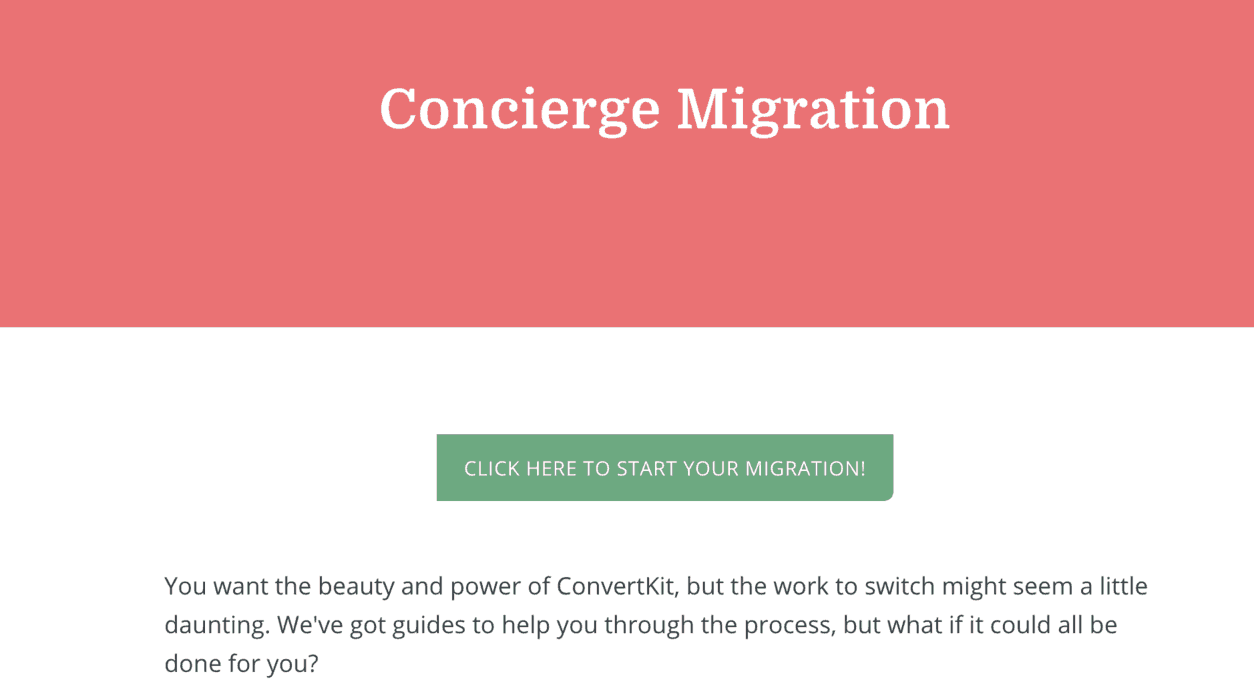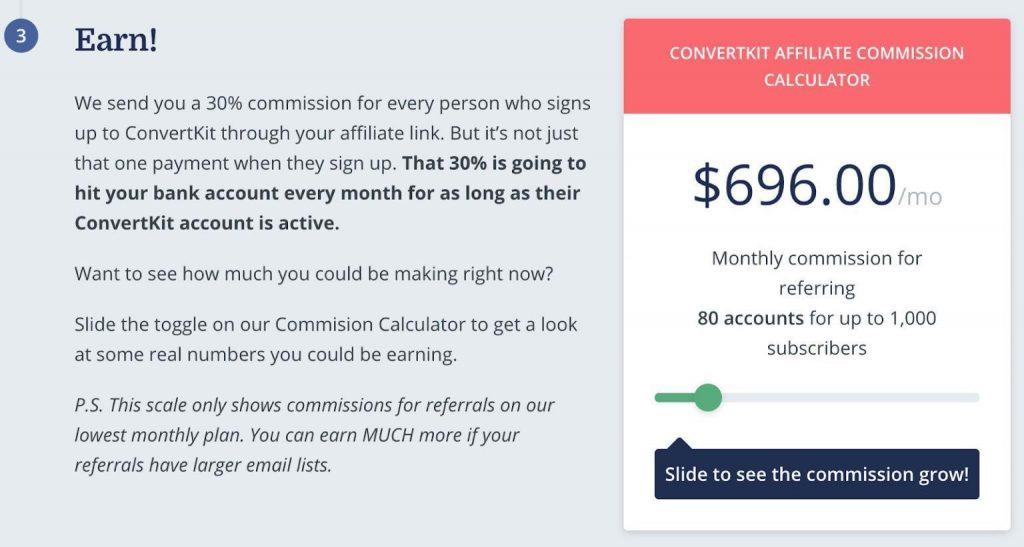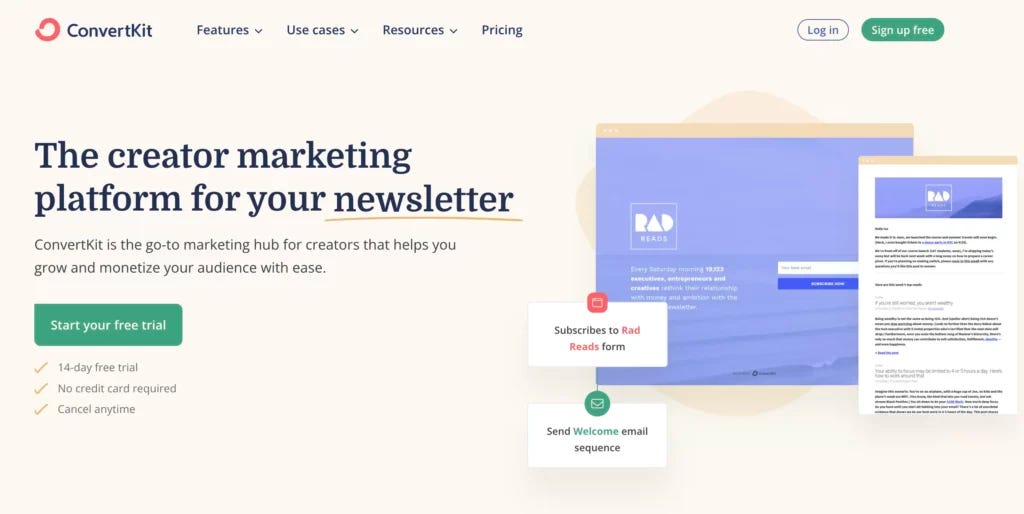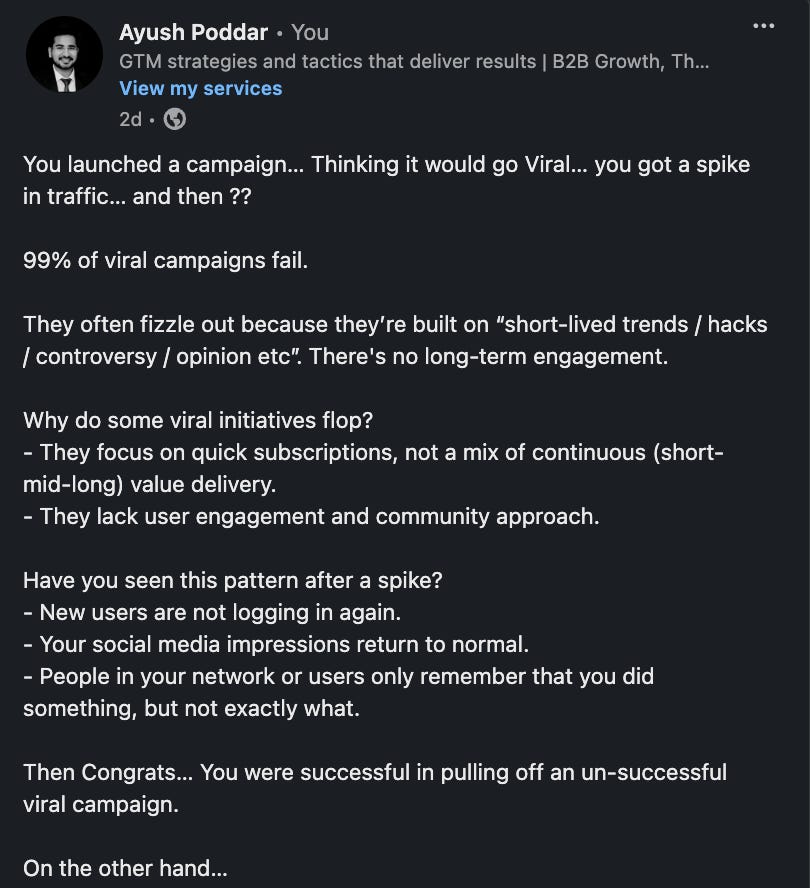ConvertKit (Now Kit) Growth Story - How Nathan Barry bootstrapped to $36.4M Recurring Revenue
Discover how Nathan Barry transformed ConvertKit into a $36.4M email marketing platform through direct sales, webinars, and strategic growth tactics.
Before launching the StartupGTM newsletter last year, I explored several tools, including Substack, Beehiiv, and ConvertKit.
I subscribed to ConvertKit’s trial version, and I was hit with one surprise after another.
Their email sequences, articles, and videos taught me more about newsletters than any other content out there.
As I dug deeper into their story, I discovered that they bootstrapped their way to an ARR of $35 million.
They’ve pulled off some brilliant growth hacks over time and persevered through tough challenges.
Let’s dive into their growth story and the secret sauce behind their success...
Growth Timeline – The ConvertKit Playbook by Nathan Barry
For ConvertKit, growth was more like climbing a steep hill…
… slow and painful at first, with occasional growth jumps triggered by smart initiatives.
Here’s their growth timeline.
2013: ConvertKit Launch
By mid-2013, they barely hit $2,000 MRR. Nathan Barry was still testing product-market fit, balancing between creating the product and finding early adopters
2014: The Do-or-Die Moment
Revenue dropped to $1,330 per month.
Barry was in a confusion to shut it down. Instead, he invested $50,000 of his own money and hired a full-time developer. He realized creators needed more support and thus offered free setup and data transfer.
2015: The Inflection Year
March: $5,020 monthly recurring revenue
June: 2x Jump to $10,000
December: 10x Jump to $97,000
What Worked:
Personal demos + concierge migration = eliminated friction.
Affiliate marketing partnerships, like with Pat Flynn, provided steady signups from users.
ConvertKit’s team handled setup for free—moving subscriber lists, tags, and automations for new customers.
2016: Growth Picked
MRR finally hit $625,000.
Hosted 150+ Webinars: focused on education rather than selling.
Affiliate Marketing: 30% recurring commissions attracted creators and influencers.
This led to a 637% increase in monthly revenue and they closed the year at $5.8M revenue
2018: Exponential Growth
Revenue jumped to $13.2M: Thanks to their niche focus—creators and content-driven businesses.
They refined product offerings for creators, further differentiating from Mailchimp and other competitors.
Community-first strategy
Direct Outreach
2020: COVID Boost
ARR Jumped 2x to $25M: While other companies struggled, ConvertKit thrived.
More creators shifted online in COVID.
Their visual automations became a hook for new users.
2021–2022: Strengthening the Creator Base
Revenue increased to $33.5M by 2022.
Customers grew from 38,000 to 44,939 users (17.6%).
Creator Network Launch: A referral engine drove more sign-ups through cross-promotions.
2023: $35M Milestone
Revenue Hits $36.4M with 49,000 customers.
ConvertKit stayed creator-centric. With more niche products and loyal advocates, they’ve positioned themselves as a specific solution for creators.
Challenges and Impact – MRR Pains
Each challenge forced them to evolve and sharpen their game. Here’s an inside look at their struggles, how they impacted the company, and where they course-corrected.
🏋️ Challenge1. Early Growth Struggles (2013–2014)
ConvertKit’s MRR flatlined at $2,000 before dipping to $1,330 in September 2014.
Cause: Nathan Barry was juggling multiple projects, giving ConvertKit only part-time attention. Without focus, product-market fit was difficult to achieve.
Impact: This was a near-death moment. Barry invested $50,000 of personal savings and hired a full-time developer. It worked. MRR grew to $5,020 by March 2015.
🏋️ Challenge 2. User Adoption Barriers (2015)
Professional bloggers and creators loved the idea of ConvertKit but was afraid of the hassle of switching platforms.
Cause: Migration complexities created friction and discouraged people to sign-up.
Impact: ConvertKit solved this with concierge migrations, handling the process for users.
🏋️ Challenge 3. Cash Flow Struggles (2016)
Rapid growth left ConvertKit with only $30,000 in the bank.
Cause: They scaled too quickly without ensuring profitability.
Impact: ConvertKit pivoted toward sustainable growth by prioritizing cash reserves—aiming for three months’ worth of operating expenses
🏋️ Challenge 4. Competition and Market Pressure (Ongoing)
Competing with giants like Mailchimp and ActiveCampaign required constant innovation.
Cause: The temptation to chase broader markets posed risks of losing focus.
Impact: ConvertKit resisted too many features and stayed laser-focused on content creators. This kept their product simple and sticky.
🏋️ Challenge 5. Marketing on a Shoestring Budget (2016–2021)
As a bootstrapped startup, ConvertKit had limited funds for paid marketing.
Cause: They couldn’t compete with larger rivals on ad spend.
Impact: Instead, they hosted 150+ webinars and built an affiliate network. These cost-effective strategies drove organic growth and built a loyal community.
🏋️ Challenge 6. Product Glitches and Customization Constraints
Users reported frustrations with scheduling tools and page builders, slowing down their email campaigns.
Cause: These glitches and limited customization options frustrated users who wanted more flexibility.
Impact: Some users churned to platforms with more customization, impacting ConvertKit’s reputation.
ConvertKit’s ability to learn from these challenges transformed each setback into a building block for long-term success.
What looked like obstacles at first became opportunities for smarter growth.
Growth Strategies – Scaling Story of ConvertKit
They focused on solving real problems for creators, pivoting when necessary, and doubling down on community.
Here’s a look at the key growth strategies they used, why they worked…
✅ Strategy 1. Concierge Migrations – Easing the Switch (2015)
ConvertKit offered free migration services to bloggers, taking away the pain of switching from platforms like Mailchimp.
- Impact: This removed friction for potential users and helped ConvertKit grow from 19x by December 2015.
- Why It Worked: Switching platforms is tedious and full of complications. By handling this for users, ConvertKit built trust and reduced barriers to adoption.
✅ Strategy 2. Affiliate Marketing Program – Leveraging Advocates (2016)
ConvertKit launched an affiliate program offering 30% recurring commissions to partners like Pat Flynn.
- Impact: Within a year, ConvertKit’s MRR skyrocketed to $625,000.
- Why It Worked: Bloggers and creators who were already using ConvertKit became passionate advocates, creating a powerful referral engine.
✅ Strategy 3. Webinars and Community Building – Creating Trust (2016–2017)
ConvertKit hosted over 150 webinars with influencers and partners, focusing on education over sales.
- Impact: This helped ConvertKit develop a loyal community and boosted monthly revenue by 6x.
- Why It Worked: Webinars weren’t just sales pitches; they provided real value. By educating creators, ConvertKit positioned itself as a trusted partner rather than just another email tool.
✅ Strategy 4. Niche Focus on Creators – Laser-Focused Growth (2018–2020)
ConvertKit narrowed its focus on creators—specifically bloggers, YouTubers, and course creators. They introduced tools like visual automations that catered to these needs.
- Impact: By staying niche, ConvertKit reached $25M ARR by 2020, becoming the go-to platform for creators.
- Why It Worked: By focusing deeply on creators, ConvertKit avoided the common pitfall of feature bloat and created a strong product-market fit.
✅ Strategy 5. Creator Network and Ad Monetization (2022–2023)
ConvertKit launched the Creator Network and introduced an ad monetization platform to help users earn from their newsletters.
- Impact: These innovations helped ConvertKit grow to $36.4M ARR by 2023, expanding both their user base and revenue streams.
- Why It Worked: These features empowered creators to make money from their content, keeping them loyal to the platform.
Promotion Example: Affiliate-Driven Webinars
One of ConvertKit’s most successful promotions was affiliate-driven webinars. For example, Pat Flynn hosted a webinar promoting ConvertKit, leading to 1,000 sign-ups in just 24 hours. This kind of partnership demonstrated how powerful influencer marketing could be when paired with authentic, educational content.
From $2,000 MRR in 2013 to $625,000 MRR by 2016, and scaling to $36.4M ARR in 2023, ConvertKit’s growth curve shows sharp spikes during key initiatives like the webinar series and product launches. The focus on profitability and community-building allowed them to navigate challenges and sustain growth without heavy reliance on outside funding.
First 1,000 vs. 10,000 Users – How ConvertKit Grew
ConvertKit’s journey from 1,000 to 10,000 users offers invaluable lessons. Their story is one of hands-on outreach, strategic partnerships, and community-building efforts.
First 1,000 Users – Personal Outreach and Direct Sales
1. Direct Outreach: Founder Nathan Barry personally emailed bloggers dissatisfied with Mailchimp. These emails offered free concierge migration services, making switching platforms frictionless.
2. Skype Demos: Barry conducted live product demos over Skype, building trust one conversation at a time and directly addressing users' pain points.
3. Concierge Migrations: ConvertKit handled the migration of user data from other platforms, removing a critical barrier to entry. This hands-on service was labor-intensive but effective.
💡 What Worked:
- Trust-building through personal outreach made users feel valued.
- Concierge service eliminated switching pain points and reduced churn.
First 10,000 Users – Scaling with Affiliates and Webinars
1. Affiliate Marketing Program: ConvertKit launched a 30% recurring commission affiliate program targeting influencers like Pat Flynn .
- Flynn’s promotion alone drove $5,000 MRR in one month, showcasing the power of strategic partnerships.
2. 150+ Webinars in a Year: ConvertKit collaborated with affiliates to host webinars that educated potential users on email marketing, building value without hard sales pitches.
3. Community Engagement: ConvertKit fostered a tight-knit community of creators, who spread the word organically through word-of-mouth referrals.
💡 What Worked:
- Affiliate partnerships created a sustainable referral engine, with incentives aligned to ensure continuous promotion.
- Webinars built trust and provided education, leading to higher engagement and conversion rates.
ConvertKit’s journey from 1,000 to 10,000 users showcases the power of relationship-driven growth. They started small, with Nathan Barry sending personal emails and doing demos one by one. But as they grew, they leaned on affiliates and community engagement to scale effectively.
The lesson? Do things that don’t scale at first—but build systems that can. And always, always focus on solving real problems for your users. That’s the path to sustainable growth.
5 Key Learnings - For Founders and Marketing Leaders
1. Do Things That Don’t Scale at First
- Lesson: Nathan Barry personally reached out to bloggers and conducted one-on-one demos via Skype to onboard users initially.
- Implementation Steps:
1. Identify your ideal customer profile (ICP).
2. Reach out personally through email or direct messages to early adopters.
3. Offer free demos and concierge support to create a seamless onboarding experience.
4. Collect feedback directly to refine product-market fit.
2. Use Affiliate Marketing to Build Organic Growth
- Lesson: ConvertKit’s 30% recurring commission program incentivized influencers like Pat Flynn to promote the platform, driving exponential growth.
- Implementation Steps:
1. Identify potential affiliates in your niche with engaged audiences.
2. Offer a competitive commission structure (recurring commissions if possible).
3. Provide affiliates with marketing materials (banners, email templates).
4. Monitor affiliate performance and adjust commissions or offer bonuses to keep affiliates motivated.
3. Leverage Webinars for Community and Product Education
- Lesson: Hosting 150+ webinars in partnership with affiliates helped ConvertKit grow trust and user adoption.
- Implementation Steps:
1. Identify partners or affiliates who align with your audience.
2. Develop educational content that provides value, not just sales pitches.
3. Schedule webinars and promote them across your channels.
4. Offer limited-time discounts or trial offers to attendees to boost conversions.
4. Introduce a Freemium Model to Lower Barriers
- Lesson: ConvertKit’s freemium plan allowed users to explore the platform without requiring credit card details, encouraging upgrades later.
- Implementation Steps:
1. Identify essential features to offer for free and premium ones to encourage upgrades.
2. Ensure the free plan is compelling enough to attract users but leaves room for growth.
3. Monitor free-to-paid conversion rates and adjust feature access as needed.
5. Value Creating Smooth Onboarding Process
- Lesson: ConvertKit’s onboarding email sequence helped users achieve early wins, encouraging them to upgrade to paid plans.
- Implementation Steps:
1. Develop an automated onboarding email sequence with product tutorials.
2. Offer a checklist of quick wins users can accomplish in their first week.
3. Include reminders and follow-ups to encourage users to explore paid features.
Loved this post?
Featured Posts
If you’re not a subscriber, here’s what you missed earlier:
SaaS Conversion Strategies - Activation, Engagement, and Monetization - Part 2
The Personal Branding Blueprint for Startup Founders and Business Leaders
Subscribe to get access to the latest marketing, strategy and go-to-market techniques . Follow me on Linkedin and Twitter.












